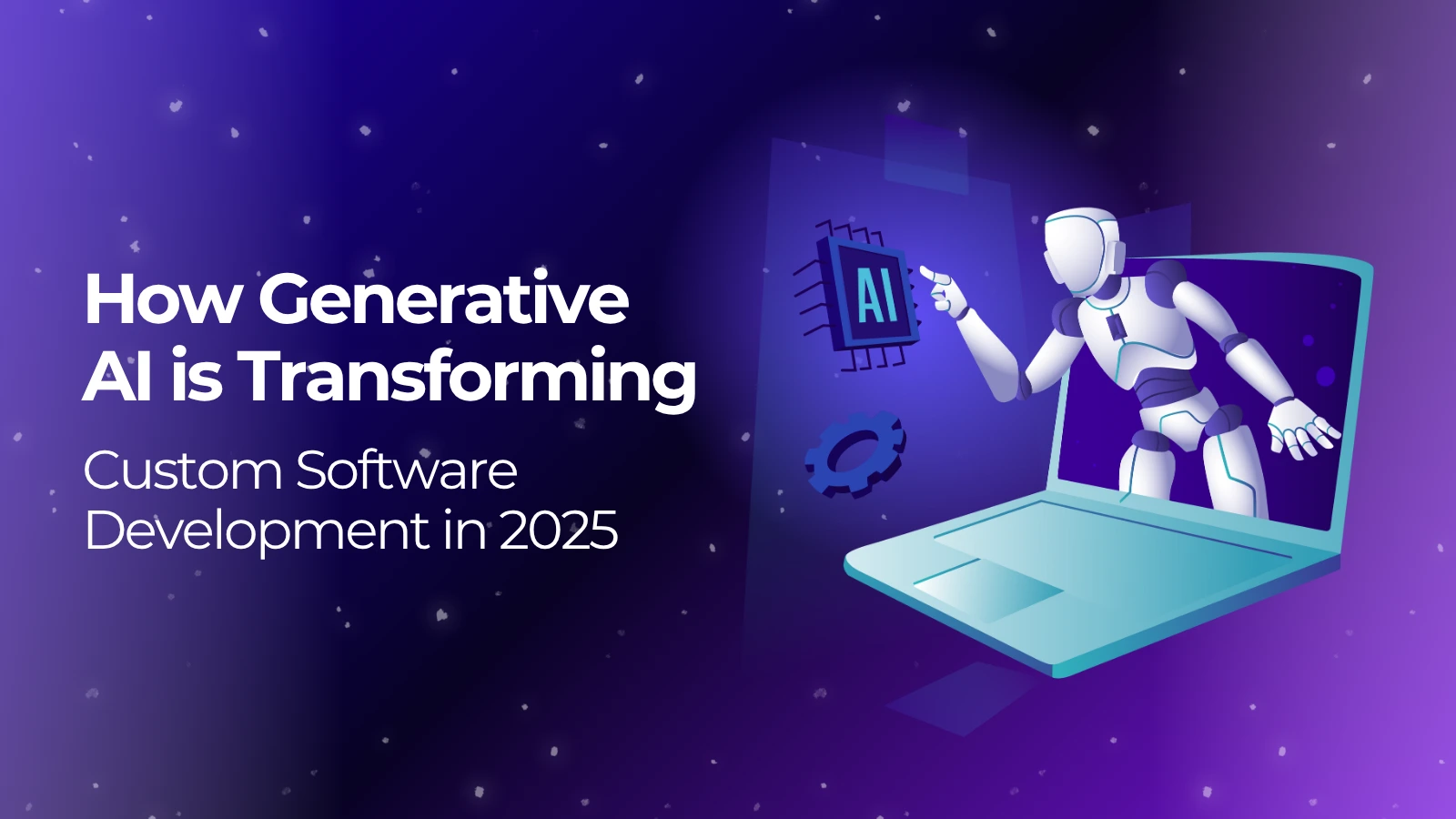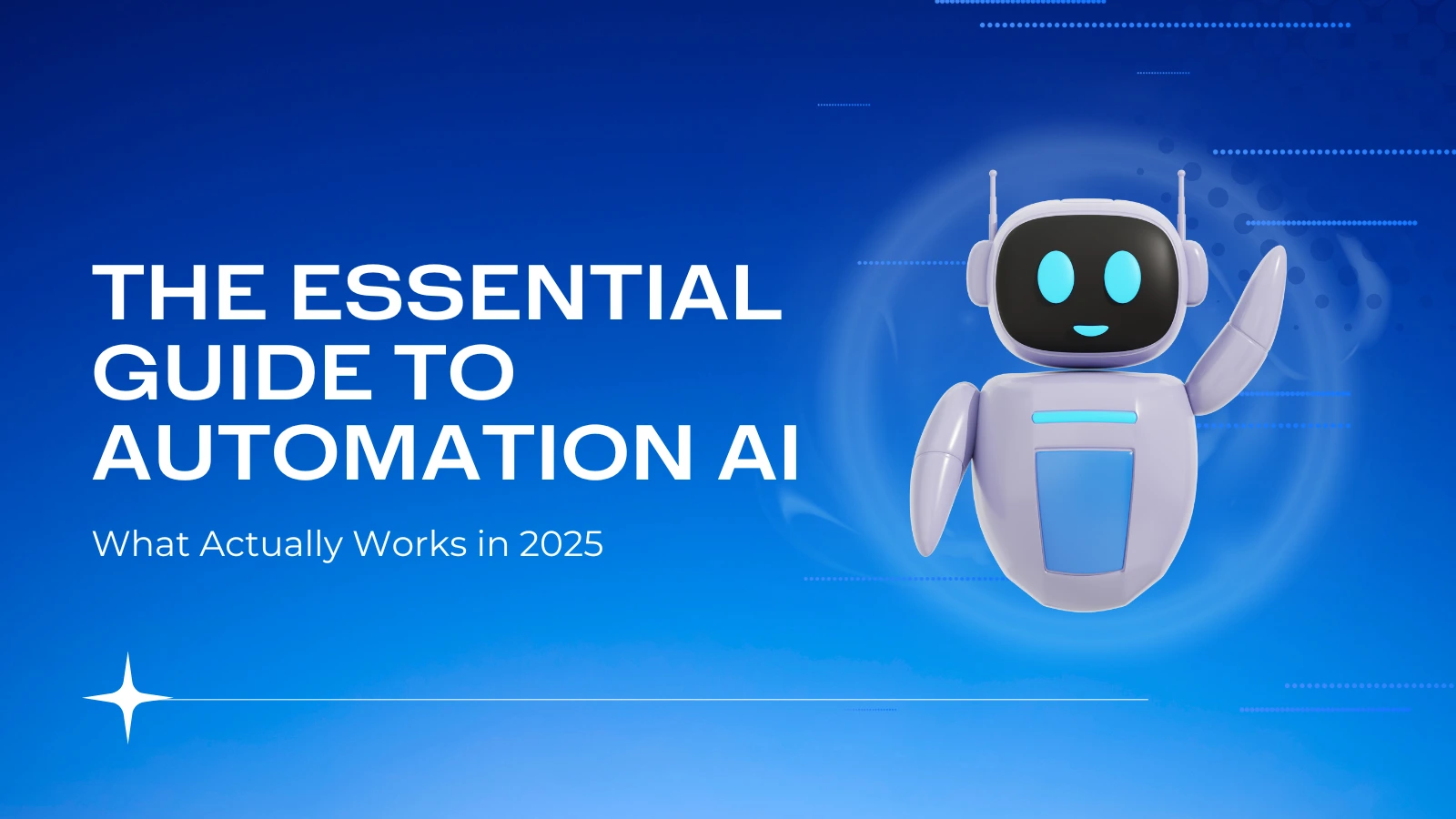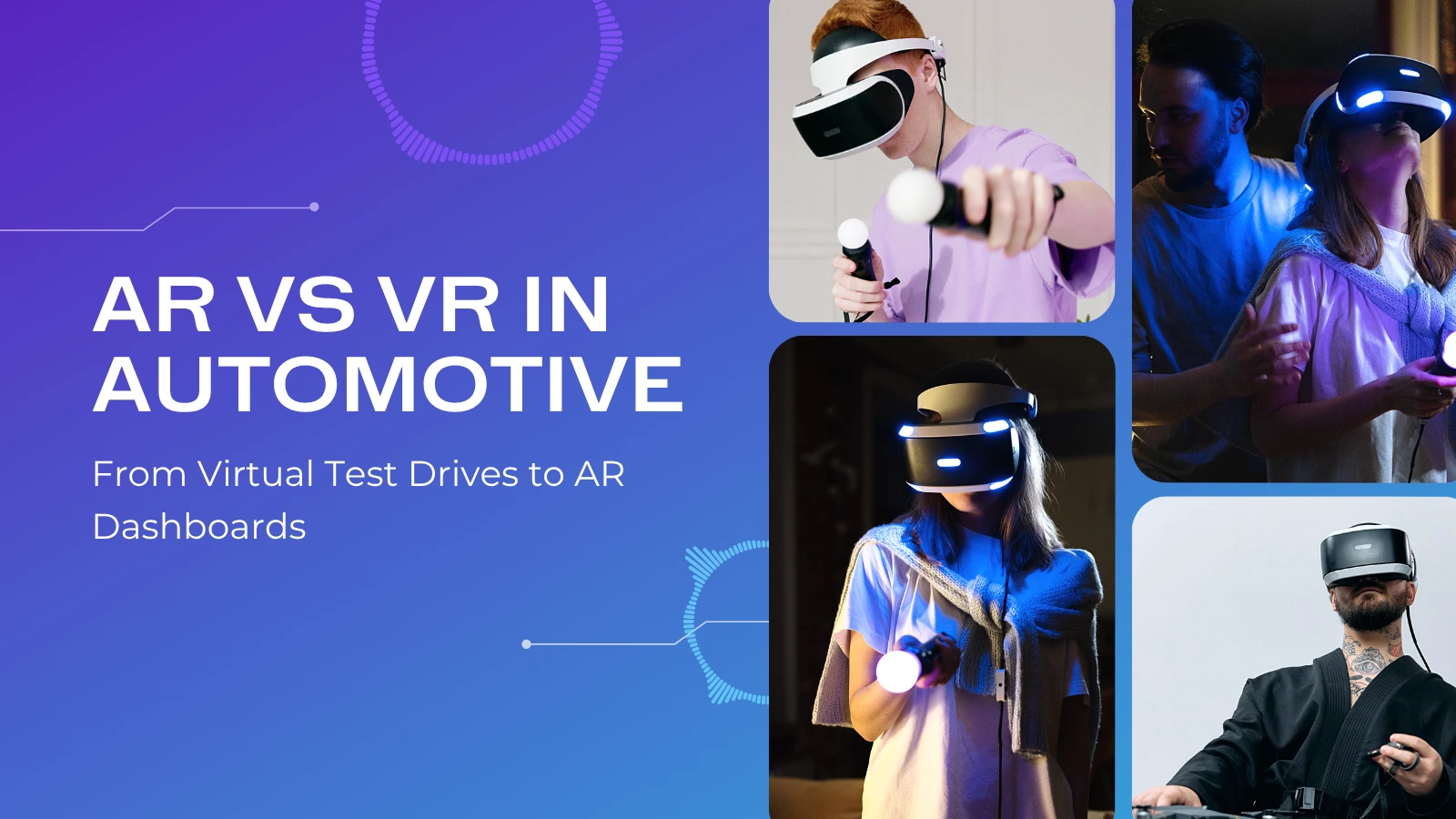How a Mobile App Development Company Uses Generative AI to Boost App Creativity and UX Design
Creating Standout Mobile Apps Through Intelligent User Experiences
The Basics of Generative AI in the App Design Process
Generative AI is a set of machine learning methods, the popular ones are deep learning networks, capable of creating new and innovative content upon learning from the enormous volumes of data. In connection with mobile app development, these models can be used for the generation of:
● Visual designs (icons, illustrations, color palettes)
● Layouts of the mobile interface (wireframes, screen compositions)
● Text content (microcopy, notifications, onboarding messages)
● Interactive elements (animations, transitions)
Examples of widely used Generative AI as a service tools are GPT-4, which is used for textual outputs, and the diffusion-based image generators DALL.E, as well as Stable Diffusion, to produce visual content. If we adapt the technology properly to the design process, they can be seen as creative assistants that will be able to give us new concepts, prototypes to test quickly, and individual experiences.
Getting Ideas and Creating Concepts More Quickly
1. Automated Moodboards and Style Guides
Traditionally, designers are taking hours to put mood boards together - these are collections of colors, typography, pictures of UI and the like so as to establish the visual direction. The AI-based tools with generative models are able to extract and analyze input prompts (vibrant fitness app for Gen Z) in a short time and create several versions of the moodboards. In these AI-generated style boards, color palettes, font pairings and sample UI components are present, thus, making the design process much easier and the creative generation almost unlimited.
Reduction in the Complexity of Wireframing and Prototyping
1. From Text to Wireframe
The process that caused the massive transformation of LLMs in the UX design industry is the technology that turns the simple text to a wireframe with interaction. For example, one of the designers may enter:
“Create a three-tab onboarding flow with progress indicators, a welcome illustration, and ‘Skip’ and ‘Next’ buttons.”
The designer did the same thing the AI instantly and directly converted the information into an interactive prototype using a suitable tool (e.g., Figma or Adobe XD) that can be navigated through, with basic interactions and placeholder text. This rapid change in the conversion process cuts down the prototype's time from days to hours.
2. Responsive and Adaptive Layouts
With the use of AI, UI designers can also come up with such types of layouts that would be able to accommodate the responsiveness of those screens that are of varying sizes and orientation. An intelligent program like this, the AI, is aware of the layout rules and the principles that describe the way a layout can behave responsively, thus making sure that the layout will be consistent while incorporating the different screens of smartphones, tablets, and even foldable devices. At the same time, manual work will be minimized, and the probability of any design errors will be reduced.
Foster the Innovation of Visuals
1. Generating Custom Graphics and Icons
Logo's ideas and brilliant creativity are the very heart of the app's brand. Nevertheless, the task of generating custom graphics and icons from the ground up can be a time-consuming one. The use of generative models that are capable of producing images comes as a relief for designers since designers are allowed to input prompts such as “minimalist line-art food icons” or “3D-style medical device illustrations” into the model. And thus, it’s not single but a number of high-quality images that the AI creates and the designers can still retouch if necessary—thus saving hours of initial asset formation.
2. Dynamic Theme Generation
There are many mobile apps which offer light and dark modes, feature some seasonal themes, or just change the UI during certain events (e.g., holiday promotions). Generative AI can instantly generate consistent theming sets with the adaptation of color contrasts, icon fills, and background patterns according to the accessibility standards for users with color blindness and low vision. Such a high degree of automation is a guarantee that each different theme will be in line with the brand and will not compromise the readability for the user.
Using Data-Driven Design To Offer Customized UX Experience
1. Personalised Content and Layout Arrangements
Generative AI goes beyond graphic design and is used to create personalization engines which serve content and UI configurations specifically to every user. For example, after tracking user behaviour, system AI modifies home screens, gives contextual recommendations, and changes the order of menu items without human interaction. One way that a workout app can be more user-centric is to prominently feature workout modules most used by the user while hiding the rarely used ones.
2. Automatic A/B Tests
Initially, A/B testing was based on creating several designs and manually rolling them out to different user sets. Then, the users' behavior was watched and performance might be analyzed with some AI support. It takes less time and gets better results. In addition to this, you don't need to invest time in the design. Just use best UI elements including button placement, color choice, and copy tone for better lead generation and conversion.
Enhancing Inclusiveness and Accessibility
Generative AI systems have improved their abilities on a wide range of potential user needs, starting from the compatibility of the user with a screen reader to the interactions derived from motor impairment. These capabilities can be exploited by mobile app development companies to:
● Automatically generate alt text descriptions for images and icons
● Advocate voice-controlled UI flows that go hand-in-hand with tap-based interactions
● Check that the color palettes are in compliance with WCAG guidelines for contrast
● Make changes in the layout to ensure cognitive accessibility is guaranteed
One beneficial aspect of baking AI-powered accessibility tests into the design pipeline of a business is that it broadens the app's user base without requiring significant manual effort.
AI Integration into the Design-Development Workflow
1. Plugin Ecosystems
AI-driven plugins are currently available for leading design tools like Figma, Sketch, and Adobe XD. Examples of generative features triggered by these plugins include text-to-wireframe, image generation, or layout suggestions and can be easily accessed by designers directly in the host's environment. The smooth workflow saves time and energy for designers as there is no need for interruptions.
2. Collaborative AI Agents
Apart from the normal plug-ins, some organizations initiate customized AI design assistants which are strictly based on their internal guidelines and their brand rules. These AI agents perform the following job:
● Give support to the design system as it works through the process
● Direct attention to any deviations from the brand guidelines
● Automatically make notations on prototypes using the specifications that developers are in the best position to understand (css styles, font sizes, spacing metrics)
Through being a connection between designers and developers, the agents lower handoff friction and hasten the development processes.
Case Study: AppStudioX's AI-Driven Redesign
Project the following scenario, AppStudioX, one of the most successful mobile app development companies specializing in e-commerce, and the company is a hypothetical one. The organization decided to adopt artificial intelligence (AI) to design a new e-commerce platform because they received a high number of orders and they were under considerable time pressure. The tools integrated into the design process were as follows:
● Onboarding Ideation: The use of an LLM powered plugin assisted the team to create five onboarding flows in less than 30 minutes, of which they picked one for rapid prototyping.
● Asset Generation: A diffusion-based model resulted in 200+ icon variants and similar number of characters for brand renewal, and after a short period, a team of experts chose this set of cohesive icons that matched the brand image provided.
● User Personalization: After user click-user login information (the project follow the method of not extracting and storing any user personal data) was fed into a recommendation engine, the AI conducted the task of the personalized recommendation of the homepage based on the rules and was 15% more effective in the conversion rates.
● Automated QA: The time expended in QA was significantly reduced by a pre-scanning AI assistant, which initially went through the accessibility level of the prototypes, confirming they were compatible, and also by doing the same, the team acquired 100% results with the WCAG 2.1 AA standard in the first check instead of sending to rework.
● Bias and Fairness: The models trained on biased datasets may continue the biases in visualizations or text examples. It is of utmost importance to have human oversight on a continuous basis.
● Originality vs. Overfitting: The excessive reliance on AI-generated designs can lead to the homogenization of products—without any human supervision, it is quite likely that apps will all start to look the same.
● Data Privacy: To personalize the content, the personal information of the user is required, and thorough anonymization and compliant with laws like GDPR and CCPA are absolutely mandatory.
Looking to the Future: AI in Mobile UX
It is not unexpected that AI is becoming more innovative. The next leaps could be the following:
● Adaptations in real-time designed according to the people spending time there.
● Multimodal AI agents that merge text, voice, and body language inputs
● AI-based accessibility co-pilots that adapt interfaces based on the users, they learn from
The fact that companies that use generative technologies competently and responsibly, are able to develop mobile apps that are more vivid, entertaining and inclusive is made clear over time as more and richer models become available.
Conclusion
The landscape of mobile app creativity and UX design is being reshaped by Generative AI. It allows the teams to develop premium quality apps faster while it is critical in making a positive impact on the environment, and immediately report any user privacy breaches. But, the real power of the technology springs from the combination of human creativeness, ethical loyalness, and user-oriented mindset. Organizations that succeed in maintaining this balance will not only be in the lead in the market but will also be the pioneers in what is achievable in mobile experiences.
Subscribe Now
Get the weekly updates on the newest brand stories, business models and technology right in your inbox.
More Blogs
How Generative AI is Transforming Custom Software Development in 2025
The custom software development landscape is being revolutionized with the advent of Generative AI. With enterprises focusing on optimizing their operations and speeding up innovation compared to their peers, Generative AI has become a...
The Essential Guide to Automation AI: What Actually Works in 2025
AI Automation has demonstrably reshaped the workings of businesses by processing data and completing repetitive tasks faster and more efficiently than human workers. To illustrate, AI systems can now examine vast amounts of data, simul...
AR vs VR in Automotive_ From Virtual Test Drives to AR Dashboards
The automotive industry has experienced transformative changes in the recent years, all thanks to breakthroughs in immersive technology. The most notable changes are due to Augmented Reality (AR) and Virtual Reality (VR). The debate of...

 Awards & Recognition
Awards & Recognition







